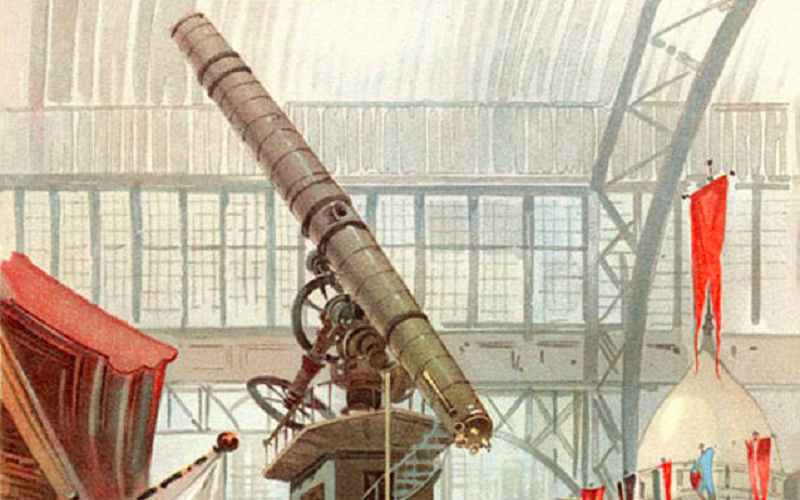
Perched on a hilltop above Lake Geneva, Wisconsin, stands a magnificent structure having two significant connections to the 1893 World’s Fair. After more than 120 years of operation, this important legacy of the Columbian Exposition faces an uncertain future.
Architect Henry Ives Cobb. (Image from The Graphic History of the Fair. (Graphic Co., 1894).]
Henry Ives Cobb, born on August 18, 1859, in Brookline, Massachusetts, had become one of Chicago’s most distinguished architects by the time of the 1893 World’s Columbian Exposition. Cobb designed several buildings for the Fair, including the Fisheries Building, Café de la Marine (aka Marine Café), the Indiana Building, the East India Pavilion, and the Street in Cairo exhibit on the Midway.
Henry Cobb’s Fisheries Building. [Image from Art and Handicraft in the Woman’s Building of the Worlds Columbian Exposition Chicago. Goupil & Co., 1893.]
Completed in 1897, the Yerkes Observatory in Williams Bay, Wisconsin, is one of Cobb’s most beautiful buildings. The façade connecting three observatories features graceful rows of arches and columns. Cobb’s ornate decorations showcase images of stars, symbols, mythical creatures, and even (perhaps) the visage of University of Chicago founder and first president, William Rainey Harper. Above the front door, the Olympian sun god Apollo rides across the sky in a chariot pulled by a team of horses.
Henry Ives Cobb’s Yerkes Observatory (1897) features whimsical decorative detail reminiscent of his earlier Fisheries Building at the 1893 World’s Fair.
The observatory, founded by University of Chicago astronomer George Ellery Hale and financed by Chicago businessman and World’s Fair director Charles T. Yerkes, calls itself the “birthplace of modern astrophysics.” Housed underneath the large dome is the Yerkes Telescope, a 40-inch diameter doublet lens refracting telescope that is the largest ever successfully used for astronomy. During the 1893 World’s Fair, the Yerkes Telescope stood in the north end of the Manufactures and Liberal Arts Building.
The Yerkes Telescope in 2017.
The University of Chicago has owned and operated the Yerkes Observatory since it opened in 1897, but announced in March 2005 that they intended to sell the observatory and 77-acre property. In March 2018, the University announced that it will end its operation of the observatory on October 1, 2018. The future for this beautiful building and its historic telescope remain uncertain. Save Yerkes Observatory and the Yerkes Future Foundation (YFF) are dedicated to preserving the observatory and seeking a transfer of ownership.
In the meantime, a trip to visit Henry Ives Cobb’s jewel on Lake Geneva offers a glimpse of the 1893 World’s Fair and, on select remaining dates, a view of the stars.
FURTHER READING
Osterbrock, Donald E. Yerkes Observatory, 1892-1950: The Birth, Near Death, and Resurrection of a Scientific Research Institution. University of Chicago Press, 1997.

